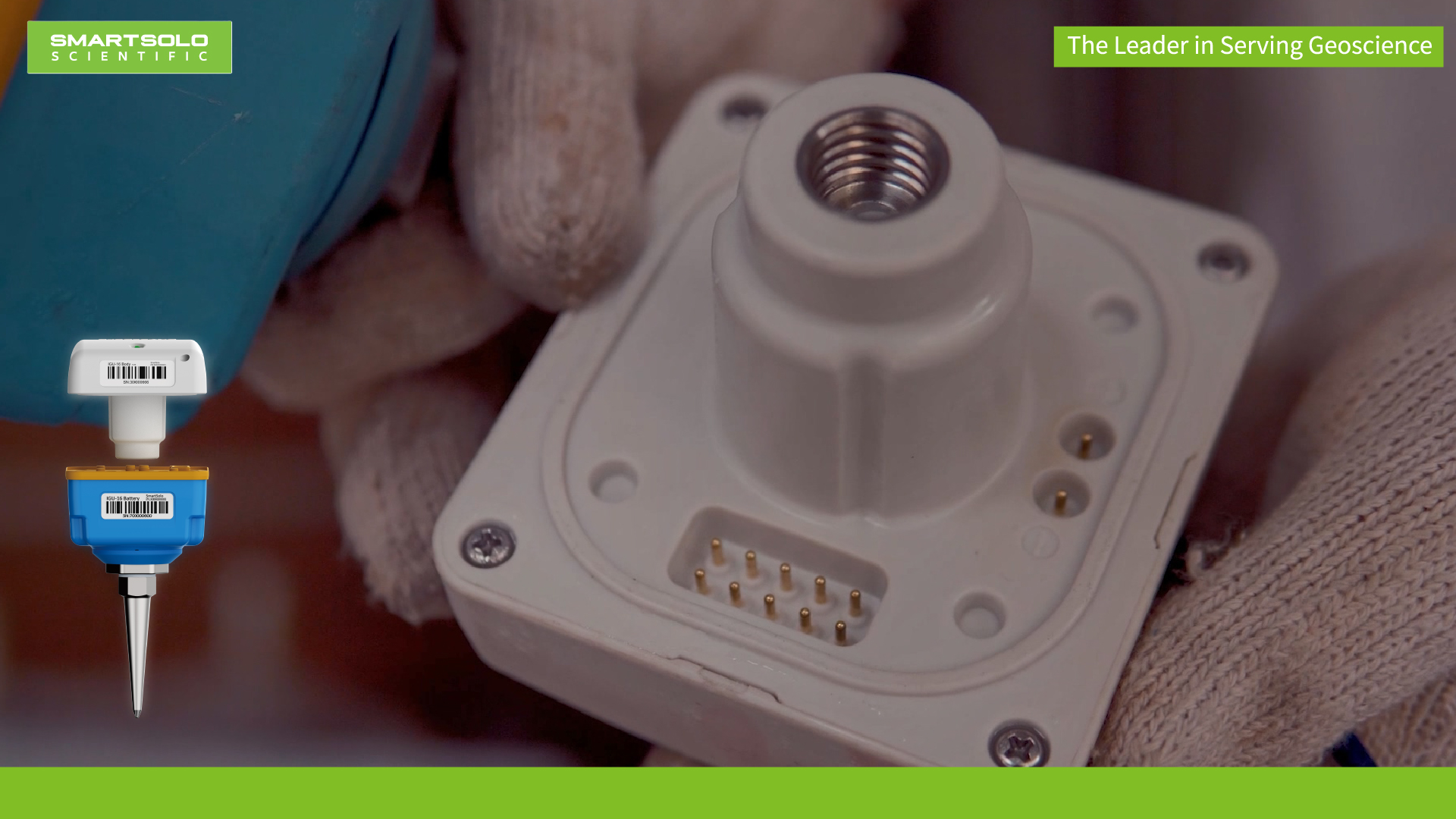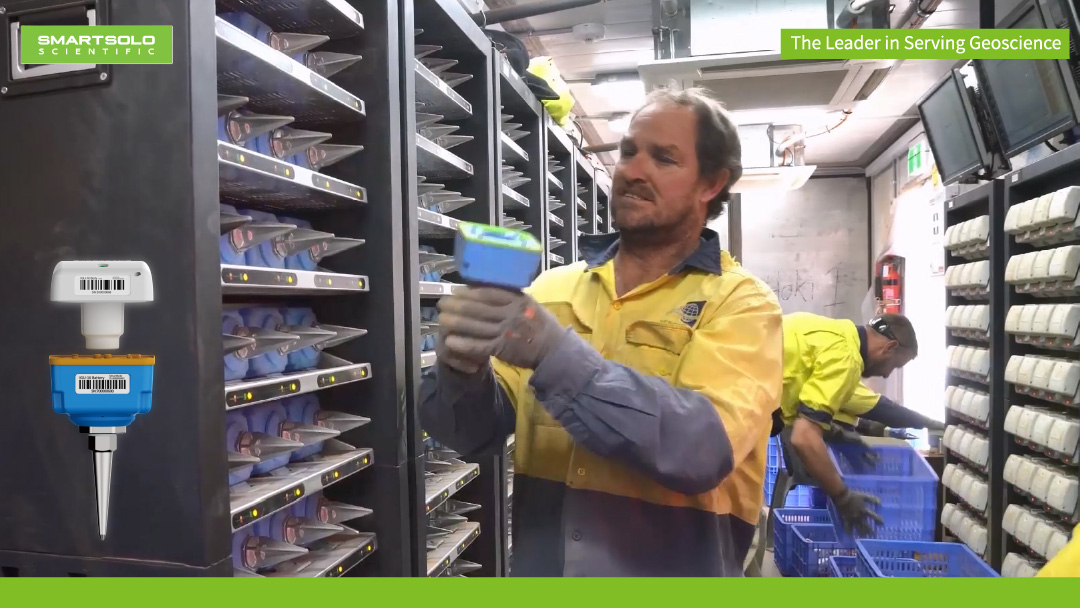On 5 January 2022, residents of Western Australia's Southern Wheatbelt
experienced a rather jarring event. They experienced a 4.0 magnitude earthquake.
Reports from the area indicate that cracks appeared in stone masonry structures
and pictures fell off the walls. Although the south-western part of the state is
known as the South West Seismic Zone (Doyle, 1971) and is one of the most active
seismic regions in Australia (Leonard, 2008, Dentith and Featherstone, 2003),
this event was still a surprise to many.
Until now, however, Western Australia has not had a rapid deployment capability. But as it happens, Dr Huaiyu Yuan (Dr Yuan) of Macquarie University, who is attached to the Centre for Exploration and Positioning at the University of Western Australia, recently acquired a new set of Smartsolo IGU-BD3c-5 seismometers under his desk. This looked like a good opportunity to test them out. DFES was also interested in what could be done in this situation. GSWA and Dr Yuan used the DFES regional network to reach out to people in the Arthur River area as the first site to deploy seismic instruments.
Five days after the initial seismic shaking, on 10 January, six additional seismic instruments were installed in the immediate area of the swarm to enhance the existing SWAN network (Figure 1). Retired seismologists from the Seismologists' Association of Australia also deployed an instrument in the area.
Figure 1. A typical installation consists of a seismometer (front) and an accelerometer (rear) to accurately record seismic vibrations caused by the Arthur River swarm.
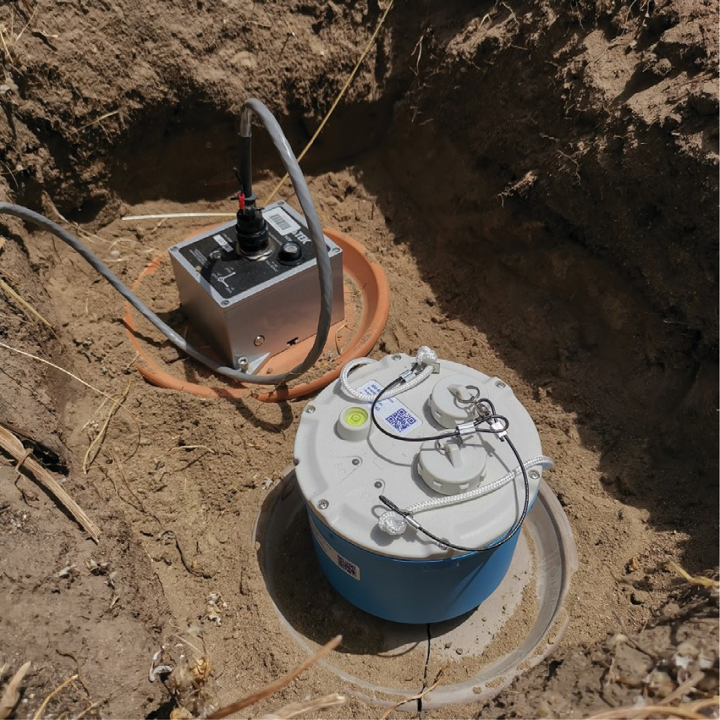
Figure 2. Waveforms from the ML4.0 on 5 January 2022 as recorded on the ANSN stations and two SWAN stations. The enlargement shows the P and the S-wave picks as picked by the machine learning algorithm.
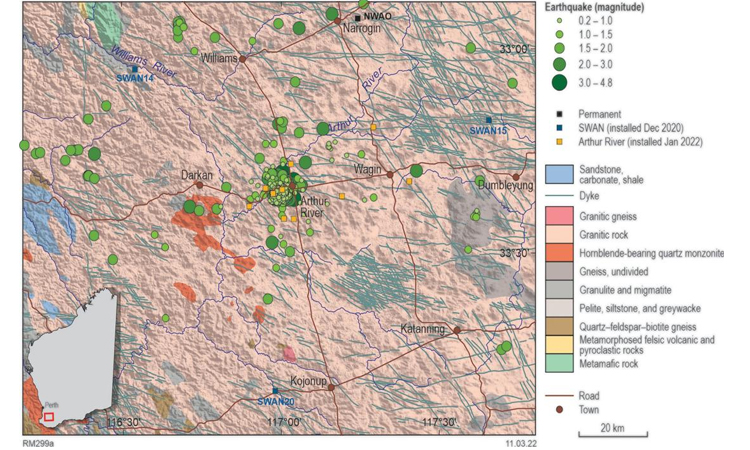
Figure 3. Locations of the earthquakes in the Arthur River area from 5 January to 1 February 2022.
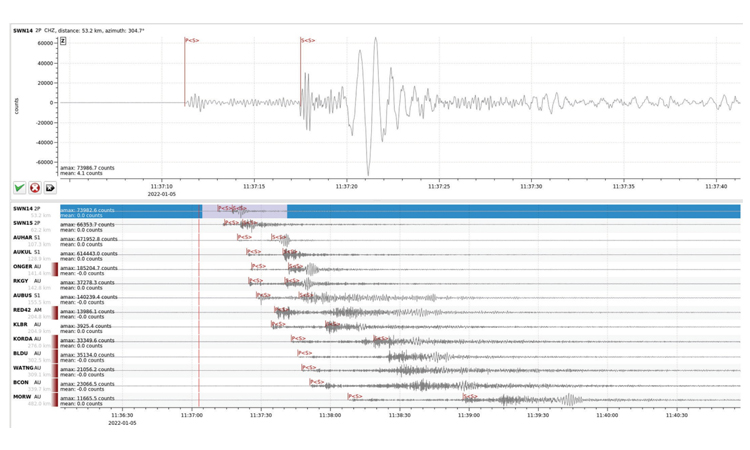
During the first three weeks of local deployment, GeoAustralia recorded only 94 events using ANSN. When the data from the rapid deployment were analysed, it was found that over 950 earthquakes were identified in tight clusters on the west side of the Arthur River, with a minimum magnitude of -0.3 (Figure 4).
Figure 4. A time-magnitude plot of the Arthur River swarm events showing the how number of events increased, particularly in the lower magnitude ranges, once the local monitoring network was installed. Note these are preliminary magnitudes have been generated by the machine learning algorithm and are slightly different from those reported by Geoscience Australia.
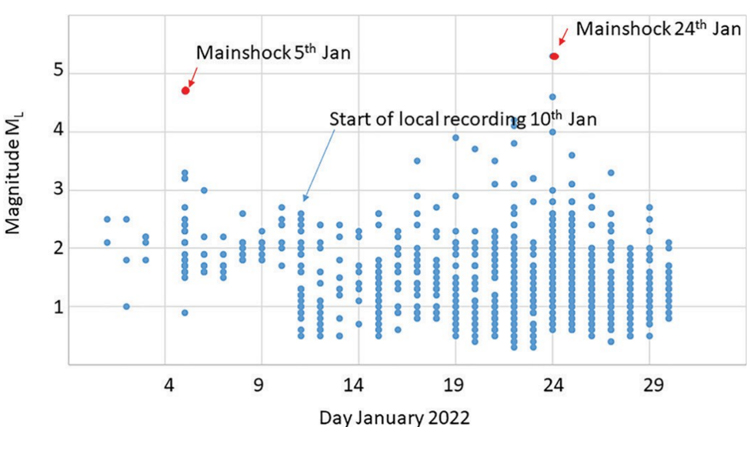
Strong ground motions recorded through the aftershock network, along with the SWAN sites, will contribute to a better understanding of the effects of earthquakes on buildings and infrastructure in the south-west region of Western Australia (e.g., Wehner et al., 2020) and will be used to guide future revisions of the National Seismic Hazard Assessment (e.g., Allen et al., 2020) The results of the SWAN project are intended to be utilised by the DFES and the GA to be utilised to increase community awareness of earthquake hazards and risks in the south-western region of Western Australia....
To cite this article: Ruth Murdie, Huaiyu Yuan, Meghan S Miller, Robert Pickle, Michelle Salmon & Justin Whitney (2022) Rapid deployment for earthquake aftershock monitoring in southwest Western Australia – the Arthur River swarm 2022, Preview, 2022:217, 39-41, DOI:
10.1080/14432471.2022.2057678
To link to this article: https://doi.org/10.1080/14432471.2022.2057678

